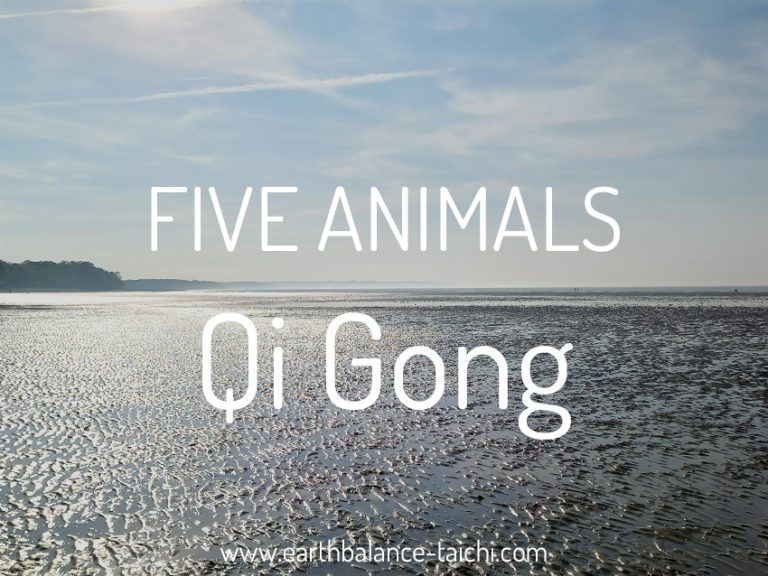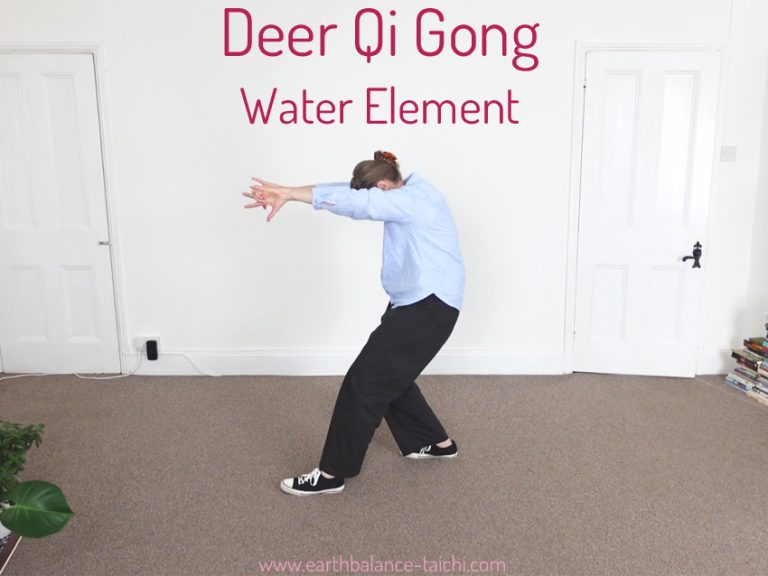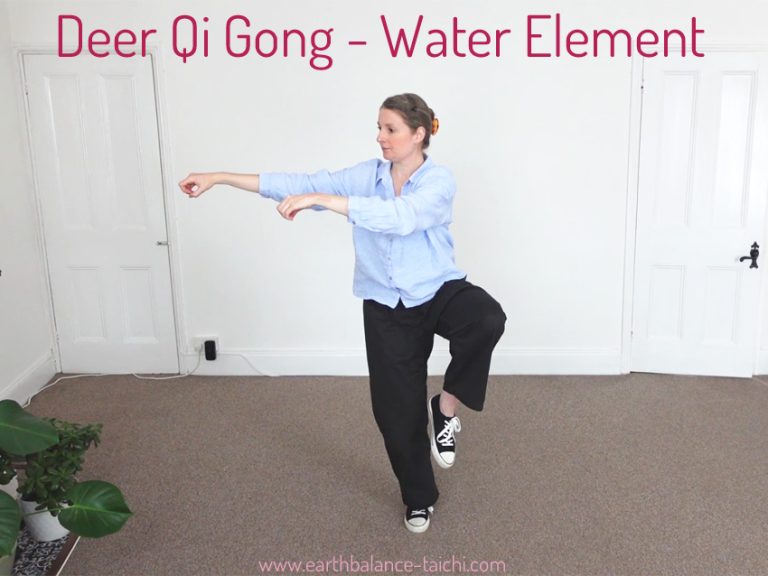Five Animals Qi Gong
五禽戲 Wu Qin Xi.
The Five Animals Qi Gong routine is an ancient Chinese health preservation exercise system dated circa 25-220 A.D., with the source attributed to Hua Tuo, a Classical Chinese Medicine doctor from the Eastern Han Dynasty. The name Qigong is commonly used in modern times to describe Dao Yin physical exercises that bring attention to posture, breath and awareness. Dao Yin is a natural method for preventative health and wellbeing using the theory of Traditional Chinese Medicine.
The five animals Qi Gong includes the tiger, deer, bear, monkey and bird. Wu Qin Xi uses imitations of animal movements to balance the five elements in Traditional Chinese Medicine. Traditionally there are lineages and versions stemming from Dr Hua Tuo's original practice, where the routine has been passed down from teacher to student over many hundreds of years. The five animals qigong routine was standardised by the Chinese government between 2000-2003, establishing the Chinese Health Qigong Association to bring their system to a global market. There are differences and similarities between schools and systems, in particular concerning the five animals and the five elements, where the animal's may represent a different element depending on the system you study.
There are two movements per animal to practice, each movement helps unblock meridian channels in the body and loosen areas of contraction and tension. Each animal also relates to one of the five elements and five yin and five yang internal organs. Outlined below are the benefits of the Five Animals Qi Gong set, looking at Traditional Chinese Medicine (TCM), physical and mental health with an explanation of the key poses.
As a general health qigong system, the five animals Qi Gong is performed as a complete routine that mimics the characteristics, spirit and physical movements of each animal. The health and wellbeing benefits are for mental balance and physical ease. Specifically aiding respiration, lung health, heart health and blood circulation, liver health, suppleness in the connective tissue, digestive health, kidney health, flexibility of the joints, spine health, muscle strength, emotional health, clarity, fatigue, nervousness and anxiety.
From £10 pcm + VAT
Downloadable MP4 Video £15
From £40 per hour
From £37 per hour
Five Animals Qi Gong
0. Adjust the Breath
- Organ: n/a
- TCM: Sinking Qi to dantian. The start of Qi to circulate.
- Health: Concentrating the mind and lengthening the breath.
Adjust the breath - Key Movements
Formal opening. Inhale as the arms raise and circle in towards the body. Exhale as the arms descend and push down. Focus on the laogong point on the centre of the palm.
1. Tiger
Yin Organ: Liver
Yang Organ: Gallbladder
Element: Wood
Season: Spring
Colour: Green
Direction: East
Number: 3 (yang), 4 (yin)

Raising the Tiger's Paws
- Organ: Stimulates the liver by the gazing eye movements, stretching the sinews in the hand postures and when raising the arms.
- TCM: Circulation of Qi in the Sanjiao (thoracic and abdominal cavities). The liver also nourishes the flow and storage of blood and strengthens the bone marrow.
- Health: Grip strength. Increases blood circulation to the hands and fingers. Strengthens the lung system through deep breathing.
Seizing the Prey
- Organ: Strengthens the kidneys and gallbladder by stretching the lumbar spine.
- TCM: Nourish and balance qi in the Du mai (governing meridian) and Ren mai (conception meridian). Dredge the 12 meridians. Nourish the kidneys. Balance yin yang in the body.
- Health: Increases blood circulation, flexion and extension of the spine, mobility in the lower back, massage internal organs.
Raising the Tiger's Paws - Key Movements
Focus on the trunk as the arms raise up passed the abdomen, chest, neck and head whilst maintaining an upright spine. Look for a cycle of expansion and compression in the abdomen and chest as you flow through the movement.
Seizing the Prey - Key Movements
Focus on the stability of the lower body, progressing from a horse stance to an empty stance with changes in your centre of gravity. Focus on the waist driving the movement of the arms, creating two vertical circles as you lift the arms up overhead.
2. Deer
Yin Organ: Kidneys
Yang Organ: Bladder
Element: Water
Season: Winter
Colour: Blue or black
Direction: North
Number: 1

Colliding the Antlers
- Organ: Nourish and strengthen the kidneys by stretching around the waist and lower back.
- TCM: Nourish and balance Qi in the Du mai (governor meridian) and Ren mai (conception meridian). Activate yang Qi.
- Health: Side flexion and extension and rotation of the spine. Strengthens the lower back and waist muscles.
Running like a Deer
- Organ: Nourish and strengthen the kidneys by stretching around the waist and lower back.
- TCM: Open and stimulate Ming Men (DU-4). Nourish and balance Qi in the Du mai (governor meridian). Stimulate qi in the 3 yin and 3 yang meridian channels in the wrist/hand to aid the neck and shoulders. Activate yang Qi.
- Health: Flexion and extension of the spine. Spiralling rotation of the shoulders and arms. Strengthens and relaxes the neck, shoulders, waist and spine.
Colliding the Antlers - Key Movements
Focus on the waist, kidneys, lumbar and the coccyx. The movement is driven from the waist, the shoulders are relaxed and connected to the waist. A mistake is to let the shoulders lead the movement. The secondary focus is to compress and expand the side waist.
Running like a Deer - Key Movements
Focus on the waist, kidneys, lumbar and the coccyx. Create two bow shapes, one horizontal (arms) and one vertical (spine) as you progress to the height of the movement. This flexes the spine stimulating the muscles and connective tissue in the waist, back, lower back and sacrum area.
3. Bear
Yin Organ: Pancreas & Spleen
Yang Organ: Stomach
Element: Earth
Season: n/a
Colour: Yellow, Brown, Beige
Direction: Centre, South West, North East
Number: 2, 5, 8

Rotate Waist like a Bear
- Organ: Strengthens the stomach, pancreas and spleen.
- TCM: Qi circulation in abdomen, spleen and stomach. Strengthen the kidneys by stretching around the waist.
- Health: Strengthens and relaxes the waist and lower back muscles. Through the hand postures and massaging body movements this aids digestion, constipation, elimination and appetite.
Swaying like a Bear
- Organ: Strengthens the stomach, pancreas and spleen.
- TCM: Qi circulation in the spleen. Nourish and stimulate the liver and kidneys, regulates emotions and strengthens bone marrow.
- Health: Strengthens and relaxes the waist and lower back muscles, hip joints, leg muscles. Stimulates the function of the upper and lower abdomen.
Rotate Waist like a Bear - Key Movements
Focus on creating a vertical circle that is driven by the waist, with the hands, arms, shoulders and head all following your waist movement. Through the rotation, the trunk follows an expansion and compression movement. The lower body is relaxed and centred.
Swaying like a Bear - Key Movements
Focus on creating fluid stability in the lower body, moving your centre of gravity forwards and backwards in a squatting stance. The waist drives the rotation of the body, which creates the swaying arms, helping to expand and compress the internal organs.
4. Monkey
Yin Organ: Heart
Yang Organ: Small Intestines
Element: Fire
Season: Summer
Colour: Red, orange, pink, purple
Direction: South
Number: 9

Raising Monkey Paws
- Organ: Strengthens the heart muscles.
- TCM: Nourishes blood circulation and strengthens the blood vessels governed by the heart. Stimulates blood and qi circulation to the brain. The changing hand postures stimulate qi in the 3 yin and 3 yang meridian channels in the wrist/hand.
- Health: Massages the heart through expansion and compression. Increases fine motor control in the hands and fingers. Improves respiration and lung health. Helps develop balance.
Picking Fruit
- Organ: To regulate the heart mind.
- TCM: The eye and head movements help boost increase circulation to the brain.
- Health: Levels the emotions, settles the central nervous system to help reduce depression and anxiety.
Raising Monkey Paws - Key Movements
Focus on creating a rooted posture when lifting the heels and maintaining an upright spine and head as you progress towards the height of the movement. As you raise the arms up, the abdomen and anus are pulled in and released when you lower down, following an expand and compress motion. The arms follow with an even paced movement.
Picking Fruit - Key Movements
Focus on the lower body creating a stable base that co-ordinates smoothly with the upper body. The choreography of the arms is complex with a variety of movements, stretches, expansion and compress that are all repeated symmetrically on each side of the body.
5. Crane
Yin Organ: Lungs
Yang Organ: Large Intestines
Element: Metal
Season: Autumn
Colour: White and metallic
Direction: West and North West
Number: 6 (yang), 7 (yin)

Crane Stretching Upwards
- Organ: Strengthens the lungs and stimulates the lung meridian through the arms raising and lower and the hand postures.
- TCM: Stimulates Qi flow across all meridians. Aid Qi flow sinking to Dantian. Nourish and balance qi in the Du mai (governor meridian) and Ren mai (conception meridian). Balance yin yang in the body.
- Health: Increase blood circulation. Improve respiration and lung capacity. Aids lung health.
Flying like a Crane
- Organ: Strengthens the lungs and stimulates the lung meridian through massaging movements and the hand postures.
- TCM: Stimulates Qi flow across all meridians.
- Health: Massages the heart muscle and improves blood circulation and oxygen supply. Helps develop balance and leg strength. Improves respiration and lung health.
Crane Stretching Upwards - Key Movements
Focus on the lower body creating stability to co-ordinate with the opening movements of the arms, changing from the beak hand posture to open flying wings. The arms progress from a triangle posture to an arc posture, whilst the trunk goes through a coordinated expand and compress motion.
Flying like a Crane - Key Movements
Focus on creating stability to enable standing on one leg with ease and grounding. A stable base will ensure the upper body movements maintain an even flow of motion. The arm movement flows through the joints relaxing the shoulders and elbows as you raise the wrists, then by relaxing the shoulder, elbows and wrist as the arms lower.
6. Convey Qi to Dantian
- Organ: n/a
- TCM: Gather Qi into the Dantian. Remove excess Qi.
- Health: n/a
Convey Qi to Dantian - Key Movements
Formal closing. Circular breathing exercises and face rubbing.
The Five Stems Video Course
Interested to know more about Qigong? Learn about the five stems of the traditional learning process here with my free Qigong video course available to newsletter subscribers via this link.
Five Animals Qi Gong - ** Please speak with your doctor prior to starting a new exercise programme. This article is for information purposes only and must not be taken as medical advice.




















